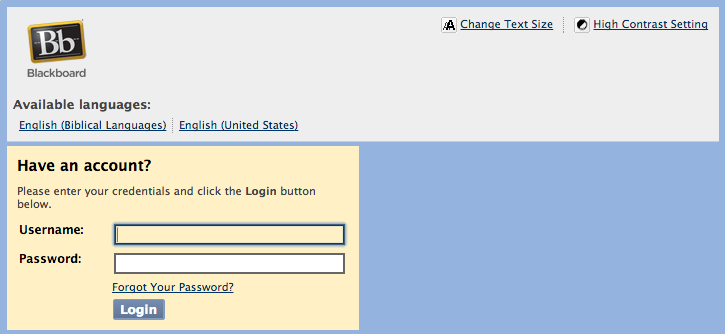
Biola University’s distance learning department, which oversees online education, is considering alternative platforms to Blackboard — the university’s current online learning management system.
“Technology is changing quickly, as we all know. Blackboard has been around and served admirably many institutions for a long time,” said director of distance learning Ron Hannaford. “However, at this point, we feel it's opportune to investigate what other options are out there with regard to platforms and whether those which are more advanced — more Web 2.0 style — would be more suitable.”
Biola began using Blackboard as early as fall 2005, according to Matthew Weathers, Biola’s Blackboard administrator.
Hannaford noted that distance learning is taking this decision slowly, and he stressed that faculty feedback is a crucial factor to any decision that will be made on this matter.
“We’re keeping our options open, checking on what’s available, [looking at] whether it’s worth the energy and effort — and money — to move across,” Hannaford said.
Biola has a three-year contract with Blackboard that is renewable in summer 2014. A decision to leap to another platform, if a leap is made, would be made at the end of this summer, according to Hannaford.
“If we were going to move, it would [give] us 12 months to transition,” Hannaford said.
Google Open Class and Canvas among other platform options to consider
Google Open Class is one proposed alternative. It is able to fit well with many other Google products Biola uses.
“It integrates with all of our calendars and email systems,” Hannaford said.
Another learning system being considered is Canvas, which is maintained by the company Instructure. During interterm, two classes piloted the software, and several classes are also using it this semester.
One interterm class that used Canvas was Joanne Jung’s BBST 103 IRIS class. Although Jung was initially hesitant to consider learning the platform, she is pleased with the experience she has had with the program.
Jung noted that Biola’s distance education classes want to create an online learning community, which is accomplished through allowing the students to engage with the professor and with each other. One of the first advantages to Canvas was the video conferencing component built into the learning system, she said.
Canvas well-received in IRIS interterm class
”You’ll find engagement in the discussion boards, but one of the most effective ways is to have a video conference,” Jung said, praising Canvas’ ability to seamlessly weave video conferencing into their software.
“[Unlike Blackboard], Canvas has its video conferencing component built into the system, so it all appears onto one screen,” Jung said.
Additionally, she showed how Canvas allows a professor to post a video comment — just like a text comment — alongside a submitted paper in the program. Furthermore, class information in Canvas transfers to other parts of the program after it is entered, like the calendars and weekly modules. This assures the consistency of assignment information.
Jung has also received substantial student reaction. Her IRIS class found Canvas intuitive and easy to navigate, she said.
Piloting software is very important to the process of collecting data, and Hannaford listed the key factors that will determine the outcome of a decision.
“Technology, faculty, functionality, cost, pedagogical benefits, student feedback, faculty feedback — [those] would be the main things,” Hannaford said.







